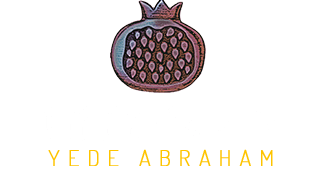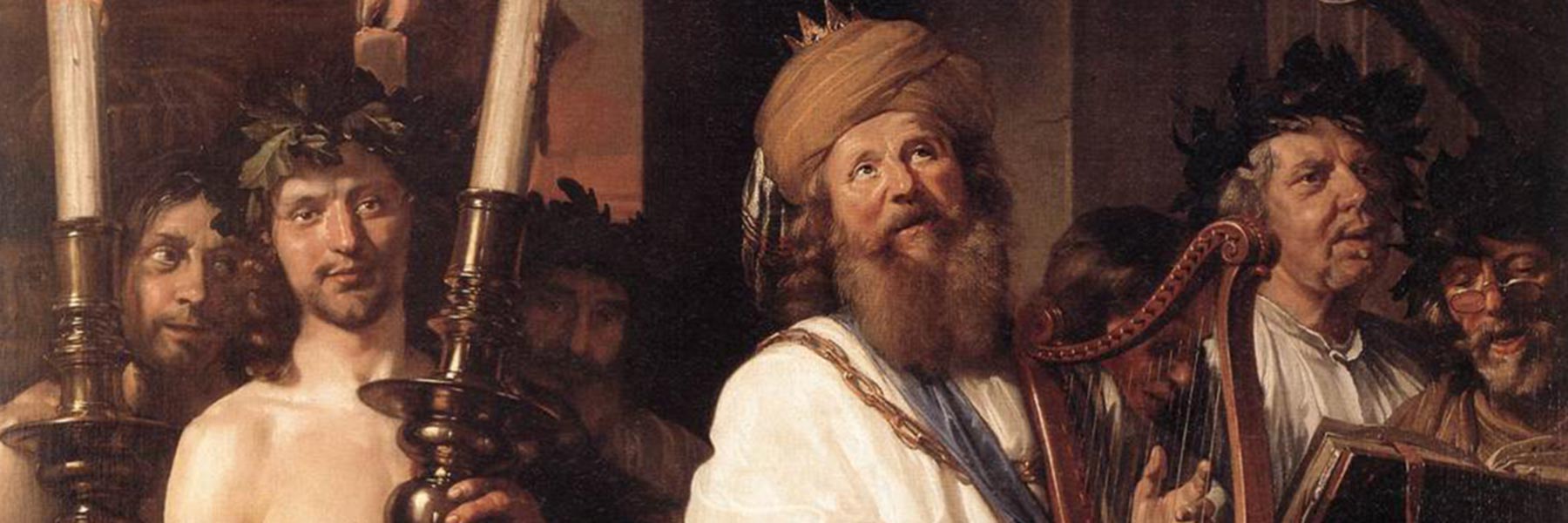The Torah Service (at Mikveh Israel)
Congregation Kahal Kadosh Mikveh Israel, Philadelphia
Prepared by Daniel C. Cohen, Esq., Ritual Committee
Edited by Richard Marcus, Member, Board of Adjuntos
The Torah service at Mikveh Israel is a unique blend of Halakhah, reverence for the Torah, dignity, good taste, common courtesy, amd ritualistic faithfulness. It begins with the assignment of Honors (“mitzvot” or duties) associated with the ceremony. The announcement of the specific functions and the names of the Honorees is in Hebrew. The Honors are announced in the following order:
- Opening the Hekhal (Ark) doors
- Carrying the Torah Scroll(s)
- Removing the bells and mantle (“bands”)
- Unwrapping the Torah Scroll
- Levantar (lifting the Torah), and
- Accompanying the Torah.
The Reader then begins “Cohanekha” and, after a courteous bow to one another, the Reader and Parnas proceed to the foot of the steps of the Hekhal where they are met by the carrier(s). In the meantime, the one called to open the Hekhal doors does so, removes the Yad (pointer) placed at the first Torah Scroll, and stands on the right side (its right) of the open Hekhal. All at the foot of the Hekhal bow, and the Reader then begins “Barukh HaMakom”.
At “Ashre”, they go up the steps and the carrier(s) move the Torah Scroll(s). At the top of the steps, they all face the Congregation in order: first Torah Scroll, (second and third, if any), Reader and Parnas. The Reader faces the Congregation and exhorts them with “Gadelu Ladonai Itti”. He continues with the “Rommemu” and the Congregation joins in on the third line. Meanwhile, the one who is to accompany stands at either of the lowest corner of the Hekhal steps, ready to join the procession promptly.
The carrier of the first Torah Scroll starts down the steps on the word “Torah” and proceeds in a stately but steady (not slow) pace to the Tebah. The others bow to the Torah Scroll as it (they) start(s) down, and they follow in this order: Torah Scroll(s), Reader, Parnas and accompanian (who, upon joining the procession, exchanges slight bows with the Parnas). The one who opens the doors hands the Yad to the Parnas as he passes (with an exchange of bows), then closes the doors and resumes his seat. It is customary for the congregants to bow slightly as the Torah Scroll passes.
When the procession reaches the Tebah, the carrier of the first Torah Scroll sits just to the right of the center of the bench while all of the wrappings are removed. Other carriers, if any, stand to his left. The Parnas stands on the South side of the reading desk and the accompanian stands on the North side, ready to assist the Levantador when he lifts the Torah Scroll.
The younger of the two boys who were called to undress the Torah Scroll removes the “Rimonim” (bells) and places them as far up on the reading desk as he can reach. He then holds the upper handles of the Etz Haim (wooden holder) of the Torah Scroll while the older of the two boys unwraps the binding (wimple). The younger then removes the mantle, placing it on the back of the bench and the two of them descend using the longer path to seats. The carrier places the Torah Scroll on the Reading Desk where it is covered by the Parnas until the end of Rommemu. If there is (are) (an) additional Torah Scroll(s), those carriers (still standing) move toward the right so the one who is holding a Torah is always to the right.
On the last word of the Rommenu, (“La-Torah”), the Parnas and accompanier each place one bell on the upper handle of the Torah Scroll and assist the Levantor. The latter opens the Torah Scroll so as to show 3 or more columns, raises it high and shows it to the West, South, East, and North, counter-clockwise, so that all can see the Torah Scroll and chant “VeZot HaTorah”, while pointing to the Torah Scroll with the corner of tallit or book or hand. He then lowers the Torah Scroll, replacing it on the Reading Desk with the help of the Parnas and accompanian. They remove the bells and place them on the forward posts on the sides of the bench. The accompanian then stands at the foot of the South step while the Parnas covers the Torah Scroll and hands the Yad to the Reader, who has just completed “He-El Tamim Darco.”
As each man is called to the reading of a portion of the Parashah, he ascends the Tebah from whichever side is closest. As he approaches the group at the desk, he greets them with “Adonai Immakhem”, and they respond, “Yebarekhekha Adonai”. He then looks at the first word to be read, (indicated to him by the Reader), looks up or to the side (so as not to appear as if reading from the Torah Scroll), and says in a quiet but audible voice, “Barehku…”. All who heard him then respond “Barukh Adonai Hameborakh…”. He repeats this and continues with the first blessing. As he finishes, he turns and bows to the accompanier who bows in return, walks behind the bench, ascends the North steps, and takes his seat on the far left (leaving enough room for the Reader to sit).
After each portion is read, the Torah Scroll is covered and then the second blessing is recited. The Reader then dismisses the one who was called by saying, “Hazak Ubarukh…” and “Mi sheberakh…”. With a bow to the Reader and the Parnas, the Honoree descends the South and stands at the foot until dismissed by the next Honoree called.
When the one called for Maftir (he who will read the Haftarah) is dismissed, he goes to the North side of the Reading desk after the Reader returns the Yad to the Parnas and the Torah carrier lifts the Scroll from the Reading desk (while all stand and the Reader chants “Elohlin Tsebaot”…) and sits with it so it can be dressed (the boys charged with dressing the Torah Scroll have been prompt so that the Torah Scroll is not left unattended for any time). The Haftarah, Prayer the Government, etc., and Ashre, are all said from North side of the desk so as not to turn one’s back on the Torah Scroll(s).
As the Congregation says “Bekhol Asher Telekh”, the Torah Scroll(s) is (are) brought to the Reading desk and held upright on its edge, while all stand (the Reader is at the North side of the desk and the Parnas at the South). The Reader chants “Yimlokh…” twice and the Congregation repeats it each time.
The Hekhal doors are opened just before the Congregation’s second repetition. All then bow to the opened Hekhal while the Reader begins “Mizmor le-David”. Thereafter, as the psalm is chanted by the Congregation, a procession
forms to return the Torah Scroll(s) to the Hekhal. Each participant bows to the slowly departing Torah Scroll(s), and then exchanges bows with each remaining person: accompanier, Parnas, and Reader, and promptly joins the procession.
The procession: Torah Scroll(s), Reader, Parnas and accompanier, descend by the south steps and slowly move to the line in the center of the open space. Taking small steps, one at a time, the carrier of the (first) Torah Scroll leads the procession to the Hekhal steps, arriving there at “Adonai Oz Leamo Yitten…”. The Carrier(s) then ascend the steps and replace the Torah Scroll(s) into the space from which it (they) came, making sure it (they) rest(s) on its (their) two handles. As the (last) Torah Scroll starts up the steps, the Parnas turns to the accompanier and
dismisses him with an exchange of bows.
After his offering, the Parnas goes behind the Reader and up one step toward the Hekhal to return the Yad to the door opener. The latter receives it from the Parnas and steps back to his position, holding the Yad.
After all the offerings, the Reader begins “Shubah” and the Congregation joins in. Upon the repetition of the last words, “Hadesh Yamenu Kekedem”, the door opener returns the Yad to its place before the (first) Torah Scroll, closes the doors, and returns to his seat.
A brief sermon may follow.

